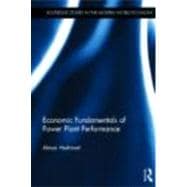
Note: Supplemental materials are not guaranteed with Rental or Used book purchases.
Purchase Benefits
What is included with this book?
| List of figures | p. xvii |
| List of tables | p. xxiii |
| Preface | p. xxvii |
| List of abbreviations | p. xxix |
| Introduction | p. 1 |
| Background to the Korean electricity industry | p. 1 |
| Background to the world electricity industry | p. 4 |
| Background to previous research on the electricity industry | p. 5 |
| Objective of this study | p. 5 |
| Generator-level database | p. 7 |
| Methodology | p. 7 |
| Application and expected results | p. 8 |
| Organization and structure of the book | p. 9 |
| The Korean electricity industry | p. 11 |
| Introduction | p. 11 |
| Energy sources, self-sufficiency, security, and vulnerability | p. 12 |
| Supply side and its development | p. 17 |
| Demand side and its development p29 | |
| Management, competition, finances, and performance | p. 35 |
| Summary | p. 39 |
| Market structure of the electricity industry | p. 41 |
| Introduction | p. 41 |
| Different power plants in the Korean electricity industry | p. 43 |
| Other residual power plants and features of the electricity market | p. 54 |
| Structural organization of the electricity industry | p. 62 |
| R&D investment, public intervention, concentration, and performance | p. 69 |
| Summary | p. 75 |
| Global trends in the electricity industry and energy consumption | p. 78 |
| Introduction | p. 78 |
| The literature on the electricity market | p. 79 |
| Global trends in energy production and energy use | p. 83 |
| Global trends in development of the electricity industry | p. 85 |
| Determinants of supply and demand for electricity | p. 95 |
| Literature on measurement and analysis of performance | p. 98 |
| Structural reorganization and changes in ownership | p. 99 |
| Literature on reorganization of the market | p. 103 |
| Evidence on reorganization of the electricity market | p. 106 |
| Summary and conclusions | p. 108 |
| Overview of performance methodologies | p. 111 |
| Introduction | p. 111 |
| Factor productivity | p. 112 |
| Parametric approaches to performance analysis | p. 124 |
| Comparison of the different measurement methods | p. 128 |
| Summary of methods of performance analysis | p. 132 |
| Previous efficiency analysis of electricity generation | p. 134 |
| Introduction | p. 134 |
| Earlier studies analyzing effects of restructuring | p. 135 |
| Management performance studies | p. 135 |
| Comparison of the performance of Korea and other countries | p. 137 |
| Recent performance analysis of Korean electricity market | p. 141 |
| Efficiency measurement and determinants of efficiency | p. 144 |
| Summary of the previous research and lessons learned | p. 146 |
| Generator-level data | p. 148 |
| Introduction | p. 148 |
| Factor inputs | p. 154 |
| Generation output | p. 168 |
| Characteristics of output | p. 172 |
| Characteristics of producers | p. 174 |
| Characteristics of intervention: public support | p. 177 |
| Summary of strengths and weaknesses of the data and suggestions | p. 178 |
| Analysis of performance at generator level and policy implications | p. 180 |
| Introduction | p. 180 |
| Stochastic frontier production and cost analysis (SFA) | p. 181 |
| Data envelopment analysis (DEA) | p. 228 |
| Malmquist productivity index analysis (MPI) | p. 250 |
| Summary of results from different performance methodologies | p. 273 |
| Summary and conclusions | p. 278 |
| The background to this study | p. 278 |
| Summary of the results | p. 283 |
| Performance index analysis | p. 293 |
| Performance index trend analysis | p. 294 |
| Policy implications of the results | p. 294 |
| Some concluding remarks about future studies of performance | p. 296 |
| Notes | p. 301 |
| Bibliography | p. 303 |
| Index | p. 309 |
| Table of Contents provided by Ingram. All Rights Reserved. |
The New copy of this book will include any supplemental materials advertised. Please check the title of the book to determine if it should include any access cards, study guides, lab manuals, CDs, etc.
The Used, Rental and eBook copies of this book are not guaranteed to include any supplemental materials. Typically, only the book itself is included. This is true even if the title states it includes any access cards, study guides, lab manuals, CDs, etc.